Samsung S90D or otherwise S94D has pleasantly surprised us in many ways. It offers excellent picture quality as befits a TV with an organic matrix. Depending on the size, the television can have different types of OLED panels. In the model we tested, the 65' version with a QD-OLED panel, the blacks are deep, and the colours are vivid and intense. The brightness of the screen, thanks to quantum dot technology, makes HDR effects very impressive. Watching dynamic scenes full of details is completely immersive. This is an ideal choice for those who want to enjoy cinema at the highest level at home. However, we noticed that the factory colour settings might require adjustment. But after the appropriate calibration, the TV showcases its full potential and competes with the best televisions, even above its price range. This model stands out with excellent viewing angles - better than the WOLED panel variants. The picture is clear and colourful from any position in the room. The Tizen operating system makes everyday use of the TV easy. Navigating apps and streaming services is simple and intuitive. Additionally, support for AirPlay and access to the SmartThings ecosystem enhance the multimedia capabilities of the device. When it comes to motion smoothness, the 144Hz panel handles fast scenes excellently and additionally eliminates motion blur. Watching sports or dynamic movies is a pleasure. For gamers, it offers support for HDMI 2.1 and low input lag, making it a great choice for console gaming. Despite numerous advantages, we noticed a few drawbacks. In bright rooms, the blacks on the QD-OLED panel lose their depth. This can be noticeable when watching during the day. Another somewhat less significant issue could be the readability of fonts when using a PC. It could be better; some texts are less sharp compared to other models. Nevertheless, the 65' Samsung S90D or S94D is a television that combines exceptional picture quality, motion smoothness, and innovation. It is one of the best options in the premium segment that will meet the expectations of both cinema lovers and gamers.
- Matching (Score)
- Our verdict
- TV appearance
- Where to buy
- Contrast and black detail
- HDR effect quality
- Factory color reproduction
- Color reproduction after calibration
- Smoothness of tonal transitions
- Image scaling and smoothness of tonal transitions
- Blur and motion smoothness
- Console compatibility and gaming features
- Input lag
- Compatibility with PC
- Viewing angles
- TV efficiency during daytime
- Details about the matrix
- TV features
- Apps
- Playing files from USB
- Sound
Samsung QD-OLED S90D / S94D vs TCL C9K
Direct compare
S90DAT / S94DAT
C9K
Available screen sizes: 65”

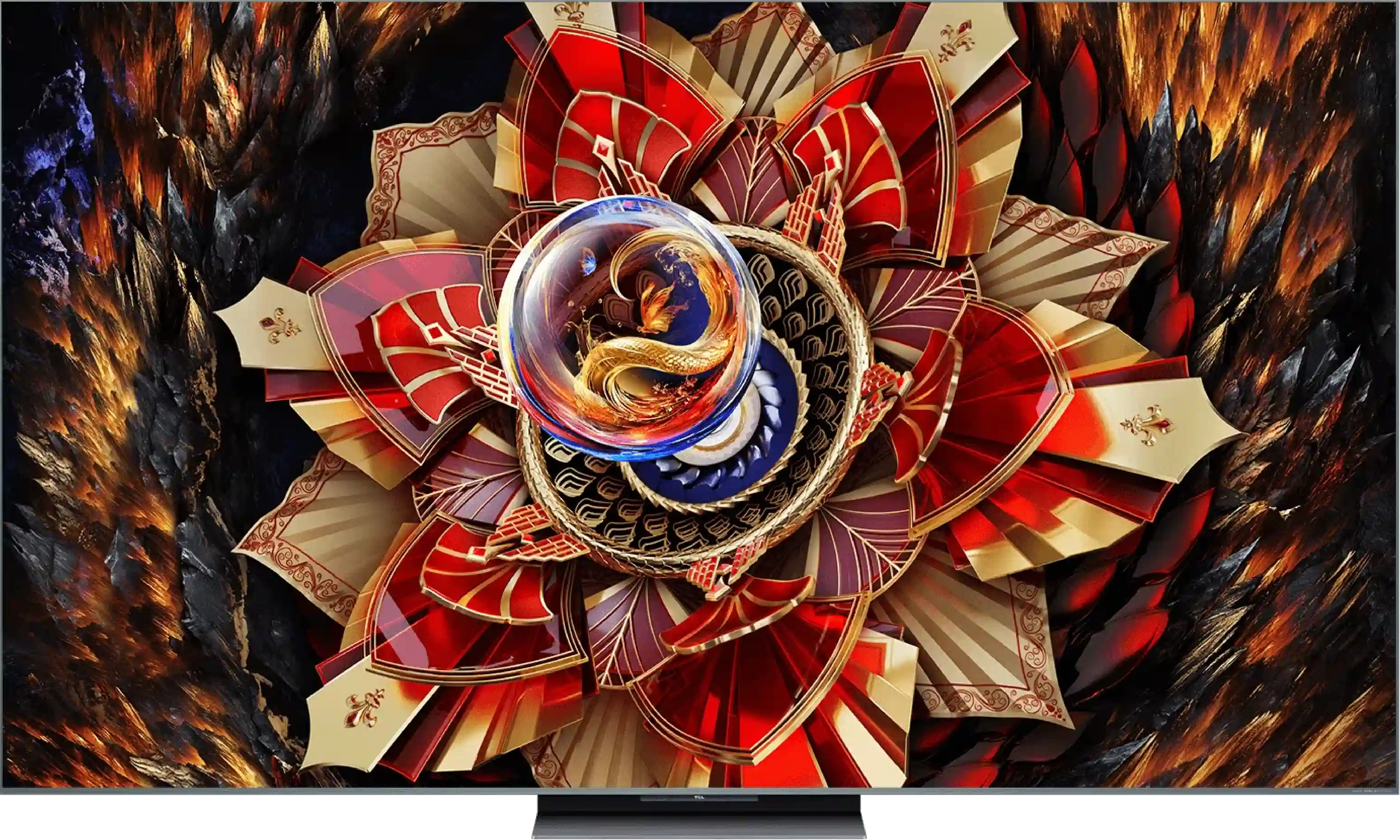
Panel type: QD-OLED
Resolution: 3840x2160
System: Tizen
Model year: 2024
Complete the survey to find out the result

Panel type: LCD VA
Resolution: 3840x2160
System: Google TV
Model year: 2025
Complete the survey to find out the result

Overall rating
8.2
7.7
Movies and series in UHD quality
8.5
7.4
Classic TV, YouTube
9.2
7.0
Sports broadcasts (TV and apps)
8.9
6.8
Gaming on console
9.6
8.9
TV as a computer monitor
8.6
8.6
Watching in bright light
5.3
7.0
Utility functions
7.4
7.7
Apps
8.7
9.6
Sound quality
7.4
7.9
Complete the survey to find out what fits your preferences
Advantages
Perfect black (OLED)
Great for 4K and HD content
Excellent for gamers - 144hz, HDMI 2.1, low input lag.
Among the best viewing angles on the market
High coverage of a wide color gamut
Above-average sound quality
Very good contrast and black levels
Very high brightness
Support for all HDR formats including Dolby Vision
Fast 144Hz panel - for gaming and sports enthusiasts
Many features for gamers: VRR, ALLM, low input lag, etc.
GoogleTV operating system with a wide range of applications
Great sound branded Bang & Olufsen
Improved viewing angles thanks to WHVA panel
Disadvantages
No support for DTS soundtracks (may be an issue with external players)
Black levels issues during the day
Local dimming needs improvement
Only 2 HDMI 2.1 ports
No recording function from built-in tuners and no PiP
No smaller variants like 55"
Our verdict
The TCL C9K is a television that on paper looks like a showcase of the manufacturer's prowess – thousands of Mini-LED zones, a WHVA panel, audio system by Bang & Olufsen, full HDR format support, gaming at 144 Hz, and even 288 Hz at lower resolutions. It’s clear that TCL wanted to pack in absolutely everything they had that was best. And indeed – in many respects, the C9K can impress. The brightness is immense, HDR can be stunning in larger scenes, motion fluidity and gamer capabilities are at a top level, and the sound – for a TV speaker – sounds really good. It’s equipment that can easily be regarded as the hub of home entertainment. But there's also another side to the coin. Brightness management simply falters despite the incredible technical specification – smaller details often get lost in shadows or are burned out. And although synthetic tests of contrast and brightness appear outstanding, in day-to-day watching of films and series the effect isn't as impressive.
To summarise briefly: the C9K is a television full of contrasts – literally and metaphorically. It can deliver experiences close to the top screens, but it’s still clear that TCL needs to work on software and optimisation. If someone is looking for a screen for gaming, sports or spectacular blockbusters – they will be thrilled. However, if they are counting on perfect reproduction of the director's vision and think they have managed to buy an absolutely top model at half the price of the competition, they will unfortunately be disappointed. It’s a pity, because the technological potential here is really immense – just a bit of common sense in its application was lacking.
TV appearance






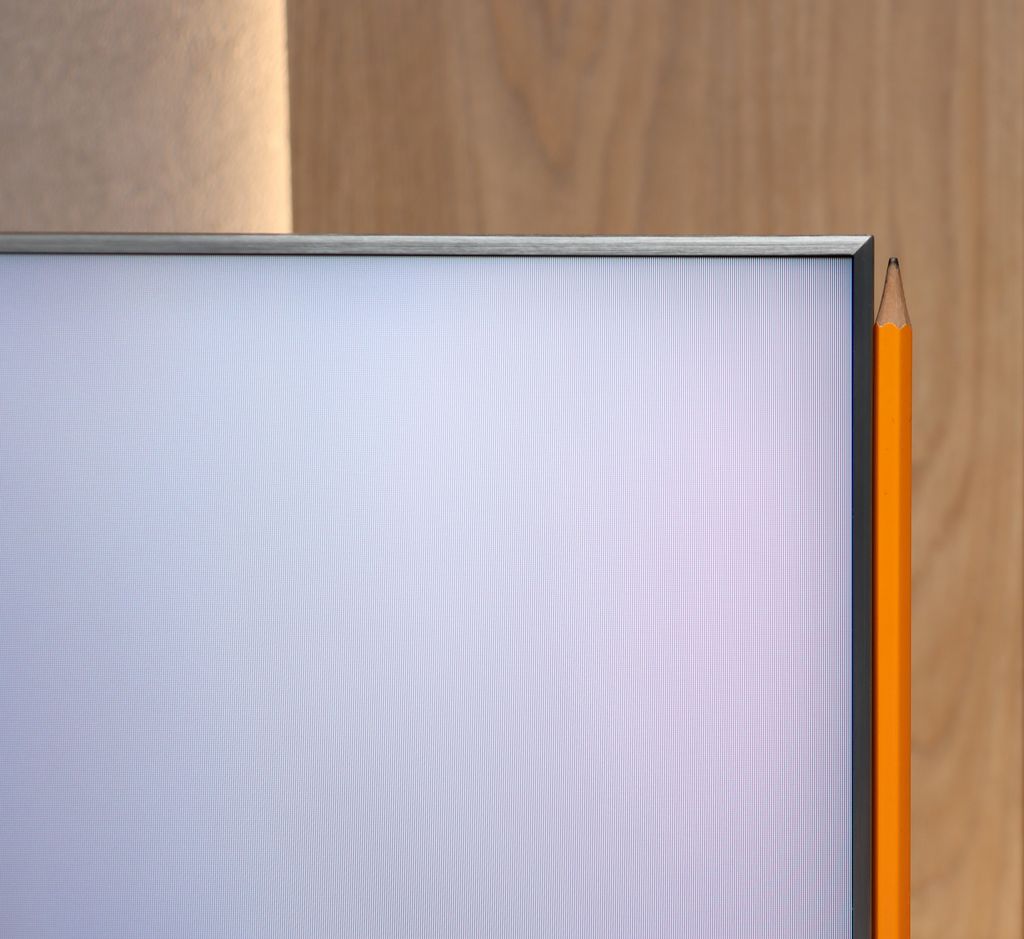
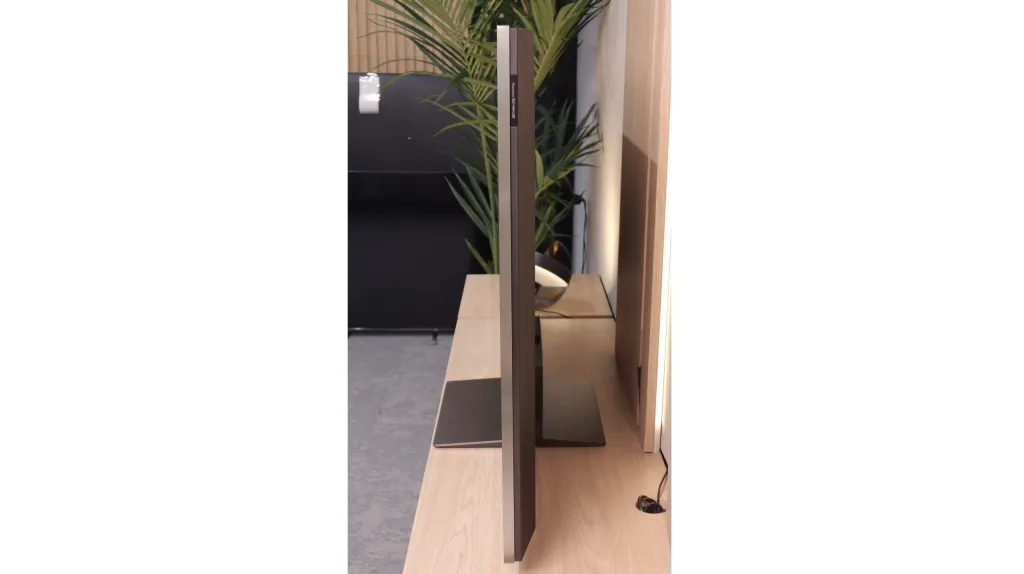
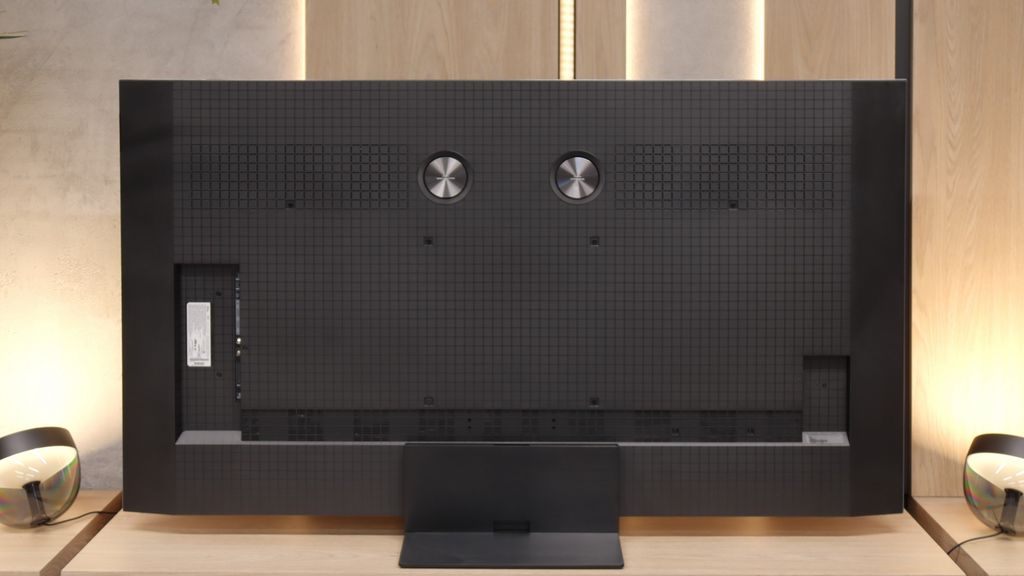
Contrast and black detail
10/10
8.1/10
Local dimming function: Yes, number of zones: 3024 (42 x 72)
Contrast:

Result
∞:1

Result
∞:1

Result
∞:1

Result
∞:1

Result
∞:1

Result
459,000:1

Result
72,750:1

Result
30,350:1

Result
9,800:1

Result
12,200:1
Halo effect and black detail visibility:

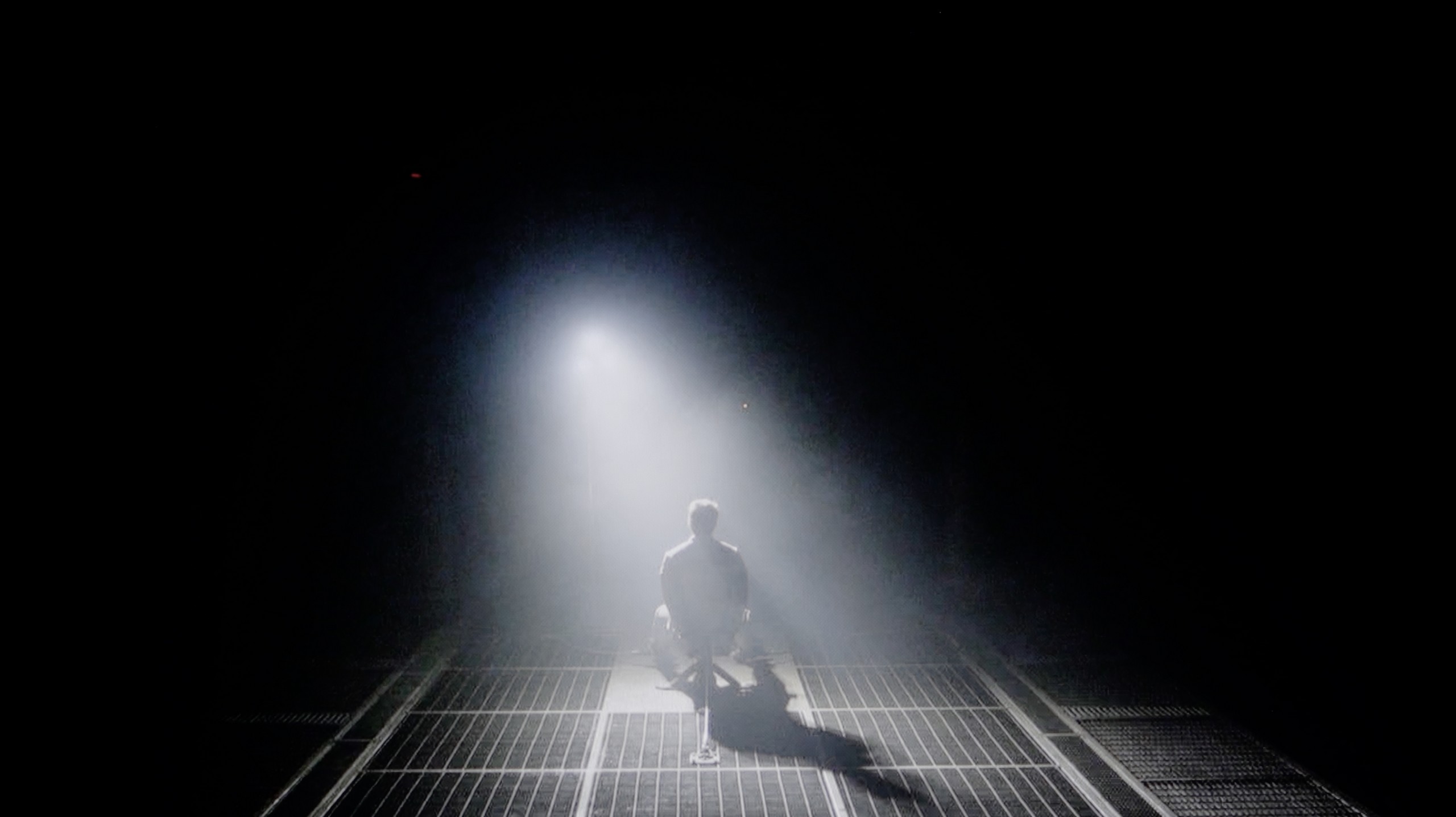
Samsung S90D, thanks to the use of a QD-OLED panel, offers excellent contrast, which is one of its greatest advantages. In QD-OLED technology, each pixel emits its own light, allowing for perfect blacks and precise detail reproduction in dark scenes. Unlike traditional LCD panels with backlighting, where blacks often appear greyish, turned-off pixels in QD-OLED remain completely black. As a result, the television provides a dynamic, realistic image with exceptionally deep contrast. For example, in scenes from "Oblivion," the Samsung S90D brilliantly captures the intensity of the lantern lights, highlighting details in the bright areas of the image, and in "The Revenant," it perfectly showcases the character against the backdrop of a deep, black forest scene, emphasizing impressive contrast reproduction. It is worth noting that in the Samsung S90D model, only this specific size is equipped with the QD-OLED panel produced by Samsung Display, setting it apart from other versions. Nevertheless, regardless of the panel used, the blacks on this television will always be perfectly black thanks to OLED technology, which turns off pixels for absolute blackness. This means that in categories such as black levels and contrast, the S90D delivers excellent picture quality regardless of the type of panel.
What immediately sets the C9K apart from the C8K model is the number of local dimming zones. In the 65-inch version, we counted… over 3000! I must admit – it’s a true show of force from TCL, who crammed literally everything they had on hand into this television. On paper, it makes a huge impression and indeed – in less demanding film scenes, the blacks look fantastic. The level is absolutely top-notch, and the separation of lights from dark parts of the image can be astonishing. The problem is that this impressive specification doesn’t always translate into practice. In our tests, we noticed situations where the C9K, despite having a greater number of zones, got caught in contrast traps and performed… worse than the C8K. For instance, it struggles to perfectly dim the true black bars in 21:9 films (those with black bars at the top and bottom). Sounds strange? Unfortunately, this is the result of a lack of optimisation – the hardware is “packed” with technology, but the algorithms don’t always keep pace with exploiting this potential.
Don’t get us wrong – black is a strong point of the C9K and in many scenes, it simply looks fantastic. In synthetic measurements, the contrast performs exceptionally well, coming close to the level of the best televisions on the market. But in real cinematic use, these numbers don’t always correlate with a better experience than that of its cheaper cousin. And that’s perhaps the biggest disappointment – because the potential was enormous.
HDR effect quality
6.6/10
6.9/10
Luminance measurements in HDR:

Result
833 nit

Result
904 nit

Result
913 nit

Result
927 nit

Result
478 nit

Result
1425 nit

Result
531 nit

Result
1277 nit

Result
331 nit

Result
1424 nit
Scene from the movie “Pan” (about 2800 nits)


Scene from the movie “Billy Lynn” (about 1100 nits)


Static HDR10


Dynamic: HDR10+
Dynamic: Dolby Vision


HDR luminance chart:
TCL C9K
Luminancja HDR
Luminance of RGB colors
Samsung QD-OLED S90D / S94D
Luminancja HDR
Luminance of RGB colors
In the HDR effect quality category, Samsung S90D achieves remarkable results. On the luminance chart up to 10% window, the TV exceeds the magical threshold of 1000 nits, which is an impressive outcome. However, in the film scenes we tested, these values were slightly lower. Additionally, in the case of a scene with fullscreen sunlight glare, brightness drops to around 500 nits, but it still remains at a very good level. It is worth mentioning that this model stands out with very high colour gamut coverage, thanks to the QD-OLED panel used, which gives it an advantage over TVs with WOLED panels that cannot achieve such a wide spectrum of colours.
As we mentioned regarding black levels and contrast – the C9K can make a huge impression in synthetic tests. Our measurements showed that on a screen 10% filled with white, the television can achieve... 4000 nits of brightness! It sounds out of this world, but – and here's where the pattern unfortunately repeats – the numbers say one thing, and the practical experience says another. In real movie scenes, the situation looks different. In the best-case scenario, when light effects occupy a large part of the image and the local dimming algorithm doesn't have to ponder too much about what to do with thousands of zones, the effect is really quite good. At that point, the C9K can hit around 1500 nits, which delivers a pleasant, intense burst and can indeed leave a positive impression.
The problem arises with smaller elements – such as stars in the sky, the moon, or individual reflections. That's when the proverbial cat comes out of the bag: the algorithms are not yet refined, and brightness drops to as low as 400–500 nits. That's a huge difference from the potential 4000 nits we saw in lab tests. Why does this happen? Most likely, the television is trying to protect the black levels in this way and minimize the halo effect around bright objects. Unfortunately, this comes at the expense of detail – some details simply vanish, and the scene loses its nature.
Factory color reproduction
7.1/10
4.5/10


Factory Mode
After calibration


Factory Mode
After calibration
Samsung 65 S90D with a QD-OLED panel has been tested in Filmmaker mode, which the manufacturer has been using for years to provide the best possible picture settings. In this mode, the TV offers a fairly decent image but with some shortcomings worth noting. In terms of white balance in HD content, viewers may notice a dominance of the red color. This effect can lead to the impression that certain skin tones appear unnatural and the overall scene will be too warm, which in turn can affect immersion in the watched material. In scenes where subtle differences in color are crucial, these distortions can be particularly noticeable. Similar sensations may also occur in 4K HDR content. Changes in white balance in this case can be analogous, with a noticeably smaller deviation in red color. This can also cause certain details and colors to not be fully represented, making the image lose its naturalness.
When it comes to contrast, the gamma presents quite well, however, some errors are still noticeable. Gamma values are below the reference level of 2.4, which can result in bright areas of the image being washed out and dark areas lacking detail. This limitation can cause some scenes to lack depth and detail, which in turn affects the overall presentation quality. On the other hand, the EOTF curve related to contrast in 4K HDR content performs really well, showing that the TV can effectively convey differences in brightness. Nevertheless, it is worth noting that these values are slightly below the ideal level on the graph, indicating the need for further optimization in this regard.
Samsung S90D in Filmmaker mode offers solid color reproduction, but requires some adjustments to fully realise the potential of the TV, especially in the context of different types of content.
For colour tests, we once again reached for the Filmmaker mode – a new feature in TCL televisions for 2025. While the direction is a step in the right way, the execution leaves a lot to be desired. The white balance in SDR content turned out to be too warm – there was an excess of red. On the other hand, in HDR, it swung in the opposite direction: the image became excessively blue. The Colour Checker test revealed quite a few colour inaccuracies that were noticeable to the naked eye. An even bigger problem turned out to be what we mentioned above – brightness management. Regardless of whether we were watching SDR or HDR content, the image tended to wash out the entire scene, giving it an unnatural, almost grotesque character. Therefore, it’s hard to call this a "director's mode" – because no director has ever seen such an image.
Color reproduction after calibration
8.9/10
7/10




After calibrating the TV, the Samsung S90D in film mode gains quality more than one might expect. The white balance for HD and 4K HDR content has been adjusted to near perfection. Although minor shortcomings can be noticed, they are subtle enough that they don’t significantly impact the overall picture quality. The colours have become more harmonised, aiding in the natural reproduction of details, particularly in scenes that require precise colour representation. It is worth noting that this model, in this size, uses a QD-OLED panel which offers broader colour gamut coverage compared to other sizes of this model that are equipped with a WOLED panel.
The contrast has also significantly improved. After calibration, the gamma graph is much closer to the expected line, providing a better balance between light and dark tones in the picture. The EOTF curve, which before calibration indicated issues with overexposed scenes, now shows significantly better results. This effect allows for the retention of more details in the bright areas of the image, especially in HDR materials.
After calibration, we finally managed to tame the white balance – and it immediately translated into a more natural image. Colours finally started to look as they should, and the overall presentation was incomparably better than on the factory settings. In other words – it’s worth taking a moment to improve this, as the gain is really significant. The gamma responsible for brightness management also managed to be brought into order in SDR content, and the effect was more than satisfactory. Unfortunately, when we turned on HDR materials, the situation quickly became complicated. No matter how we set the local dimming, the television had a tendency to do what it liked with the image – either it overexposed everything or darkened the darkest parts too much. Just like we saw in the scene from the movie Billy Lynn. Colour-wise, the improvement after calibration makes a great impression, but brightness management in HDR remains the Achilles' heel of the C9K and presents a certain technological limitation.
Smoothness of tonal transitions
8.6/10
8.7/10












In the category of fluid tonal transitions, the television S90D exhibits significantly better results than its counterpart with a WOLED panel. Thanks to the use of a QD-OLED panel, this model provides more consistent and natural transitions between colours. Although some minor imperfections were noted during testing, they are subtle enough not to impact the overall visual experience. When watching various video content, tonal transitions are smooth and harmonious, allowing viewers to enjoy the depth and detail of the image without irritating distractions. In tested scenes where colour changes are particularly important, such as in landscapes or dynamic sequences, the television Samsung S90D performs excellently, rendering differences in shades with adequate precision.
In terms of tonal transition fluidity, TCL C9K performs quite well. In more challenging movie scenes, there's no typical banding of colours that can break immersion even in more expensive TVs. There may be slight issues in the brightest areas – for example, in scenes from the movie Kingstone – but these are nuances. For the vast majority of viewers, especially with 4K content, colour gradation will appear smooth and practically unnoticeable.
Image scaling and smoothness of tonal transitions
8/10
5.5/10
Smooth transition function

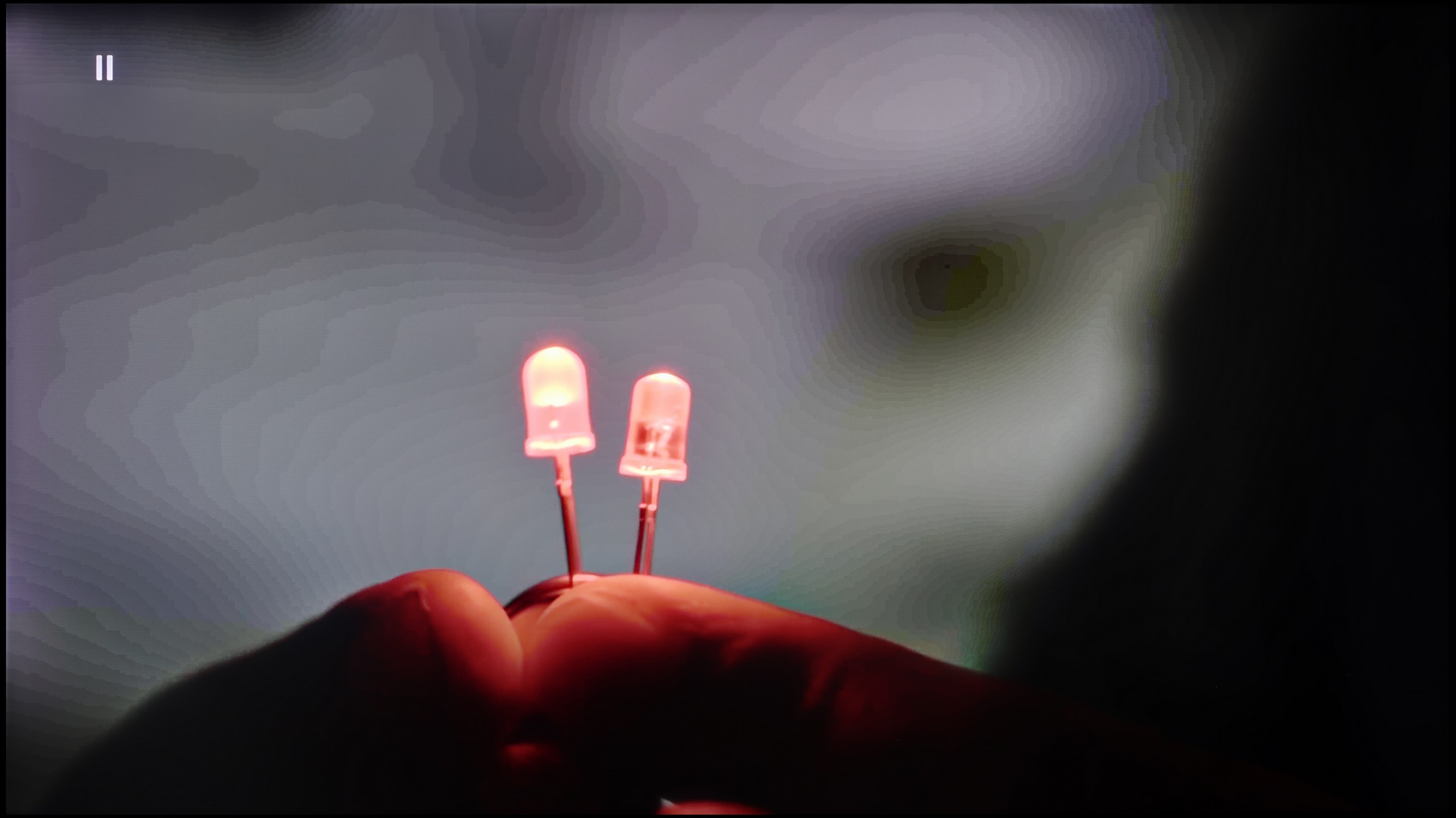
Image without overscan on the SD signal


The television handles tonal transitions excellently, allowing colours to flow smoothly into each other, creating a natural image. The built-in noise reduction feature can further enhance these transitions, which can be useful in certain situations. However, it is worth remembering that activating this option may lead to excessive smoothing of the desired film grain structure, which in turn can affect the authenticity and atmosphere of the image. Therefore, caution is recommended when using this feature to avoid losing the character and depth of the content.
The Samsung S90D model effectively processes materials in lower resolutions. This can be seen in the displayed image. The model's silhouette is clear and naturally reproduced, with details well preserved. Additionally, the branches of the trees are well-defined, showing no visible jagged edges that could degrade the quality of the image. Thanks to effective upscaling, even lower resolution materials look attractive on the screen, which will surely please users enjoying a variety of content sources, such as standard cable or antenna television.
Digital image processing on the TCL C9K is rather average. The smooth tone transition feature seems to be present, but activating it practically changes nothing – colour bands are still visible, and it can unintentionally highlight elements we’d rather keep hidden, such as object textures. Fortunately, it doesn’t remove film grain, but that’s poor consolation given that the effects are still meagre. It’s therefore hard to recommend using this option.
On the other hand, image scaling presents itself much better. Lower quality materials look quite decent – characters and backgrounds are rendered clearly, although of course, with sources like 576p, the laws of physics cannot be fooled. Occasionally, there’s characteristic edge distortion of objects, but that’s the fault of the source itself, not the algorithm. A plus for not having issues with overscan – the image isn't artificially cropped or enlarged.
Blur and motion smoothness
8.5/10
7.8/10

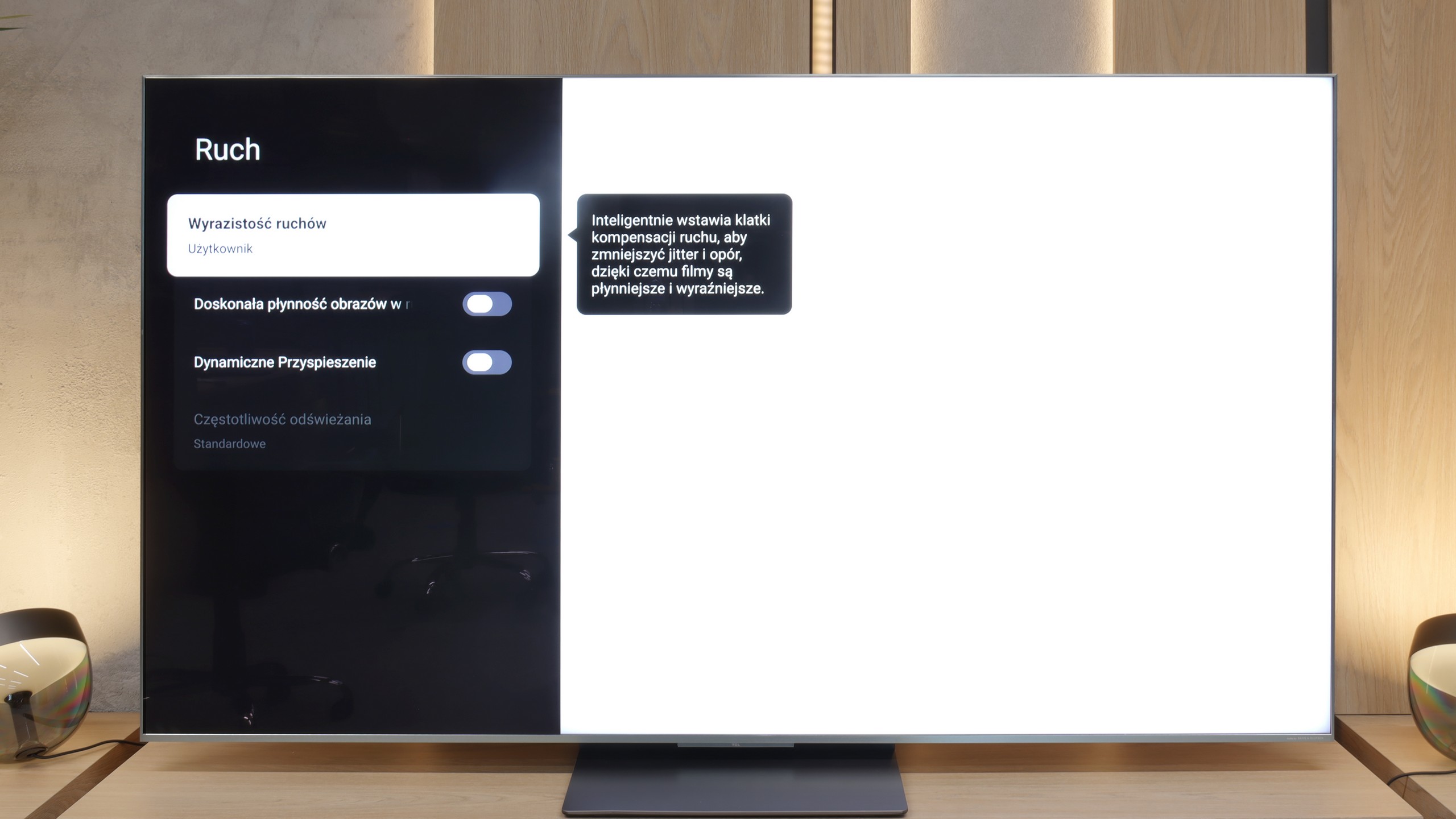
Blur (native resolution, maximum refresh rate):



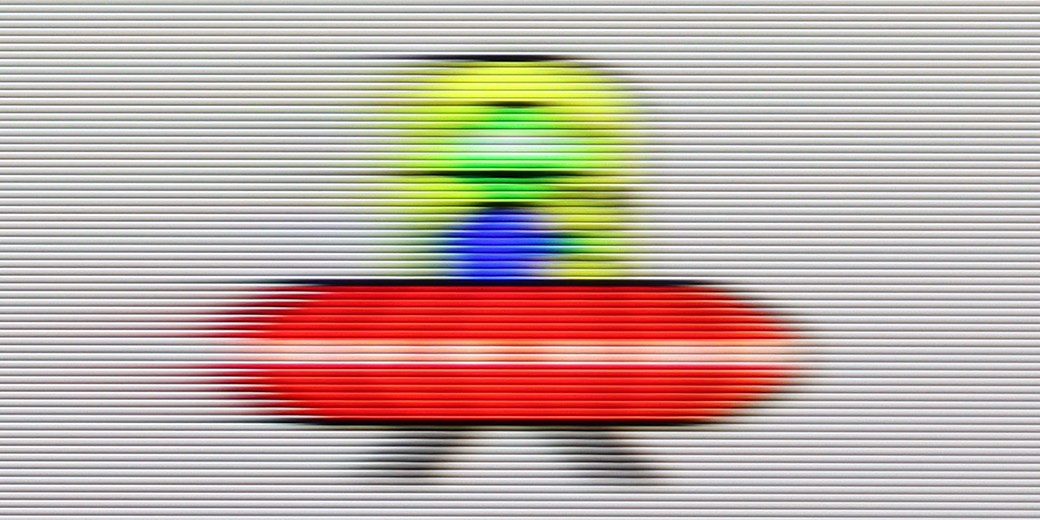
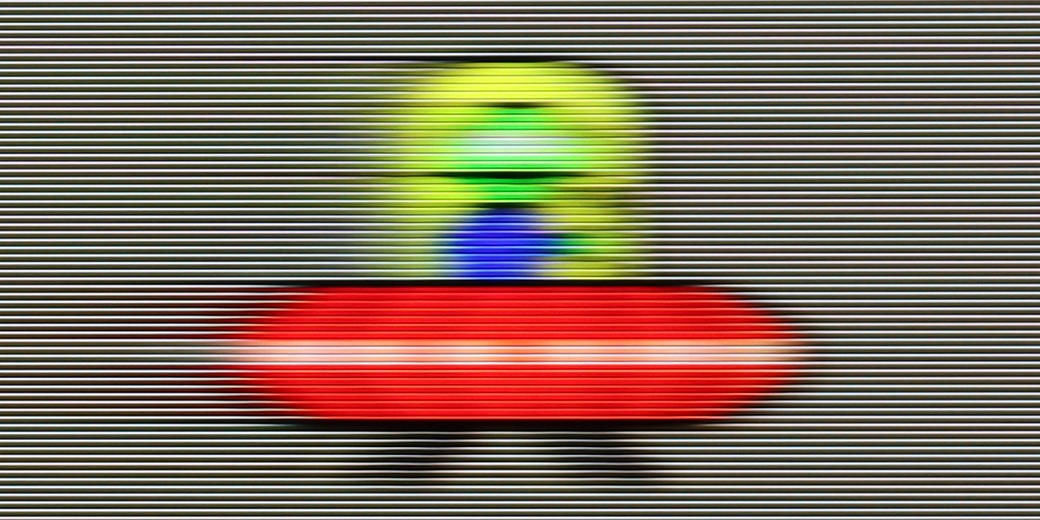
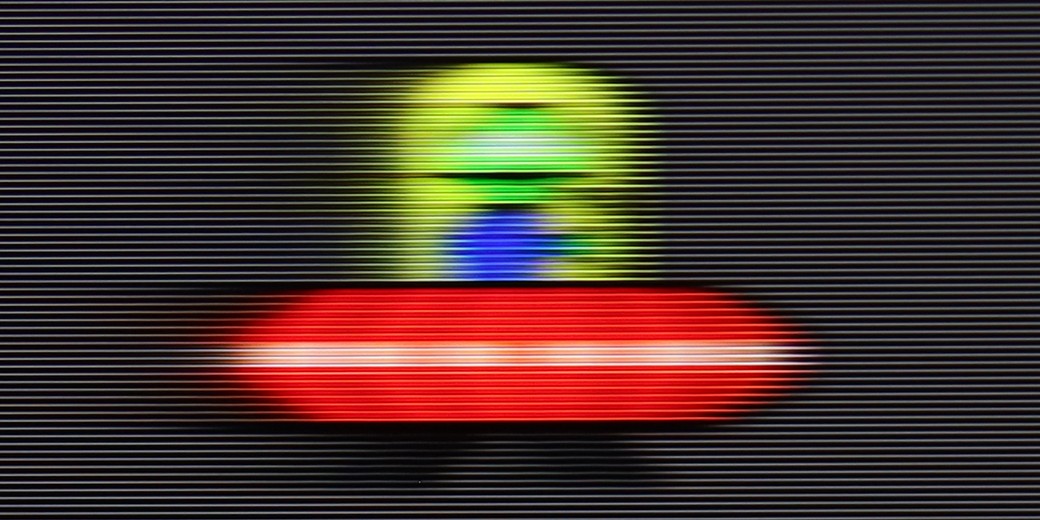
Blur (BFI function enabled):
Image flickers in this mode



Smużenie ():
Smużenie (1080p@288Hz):



Samsung S90D TV, equipped with a refresh rate panel of 120 Hz, and in the appropriate PC configuration even 144 Hz, ensures excellent motion fluidity. Samsung focuses on a variety of image clarity settings on a ten-point scale, giving users the freedom to adjust the display to their own preferences. In UFO tests, the OLED panel shows its strengths, eliminating any blurring. The lightning-fast pixel response makes dynamic movements faithfully reproduced.
Similar results can be observed in other sizes of this model with a WOLED panel, which also offer excellent image fluidity. Organic technology, in this case, is considered one of the best on the market. The picture of Samsung S90D, regardless of the type of panel, is incredibly sharp and detailed, making this TV perfect for dynamic scenes, both during gaming and sports broadcasts. Additionally, its capabilities in terms of refresh rate and clarity ensure that every movement is smooth and natural, which will certainly satisfy even the most demanding users.
Similar to the C8K, the C9K is also a really fast TV – both figuratively and literally. It features a 4K panel with a refresh rate of 144 Hz, and at lower resolutions, the panel can even ramp up to 288 Hz. Such speed translates into practice – while watching sports or playing games, the image looks very smooth and clear. Additionally, in movies, we get an extra motion smoother called Motion Clarity, which allows you to adjust the smoothness to your own preferences – from cinematic "judder" to almost theatrical smoothness.
Console compatibility and gaming features
9.5/10
9.8/10
- ALLM
- VRR
- VRR range48 - 144Hz48 - 288Hz
- Dolby Vision Game Mode
- Correct implementation of HGIG
- 1080p@120Hz
- 1440p@120Hz
- 4K@120Hz
- Game bar

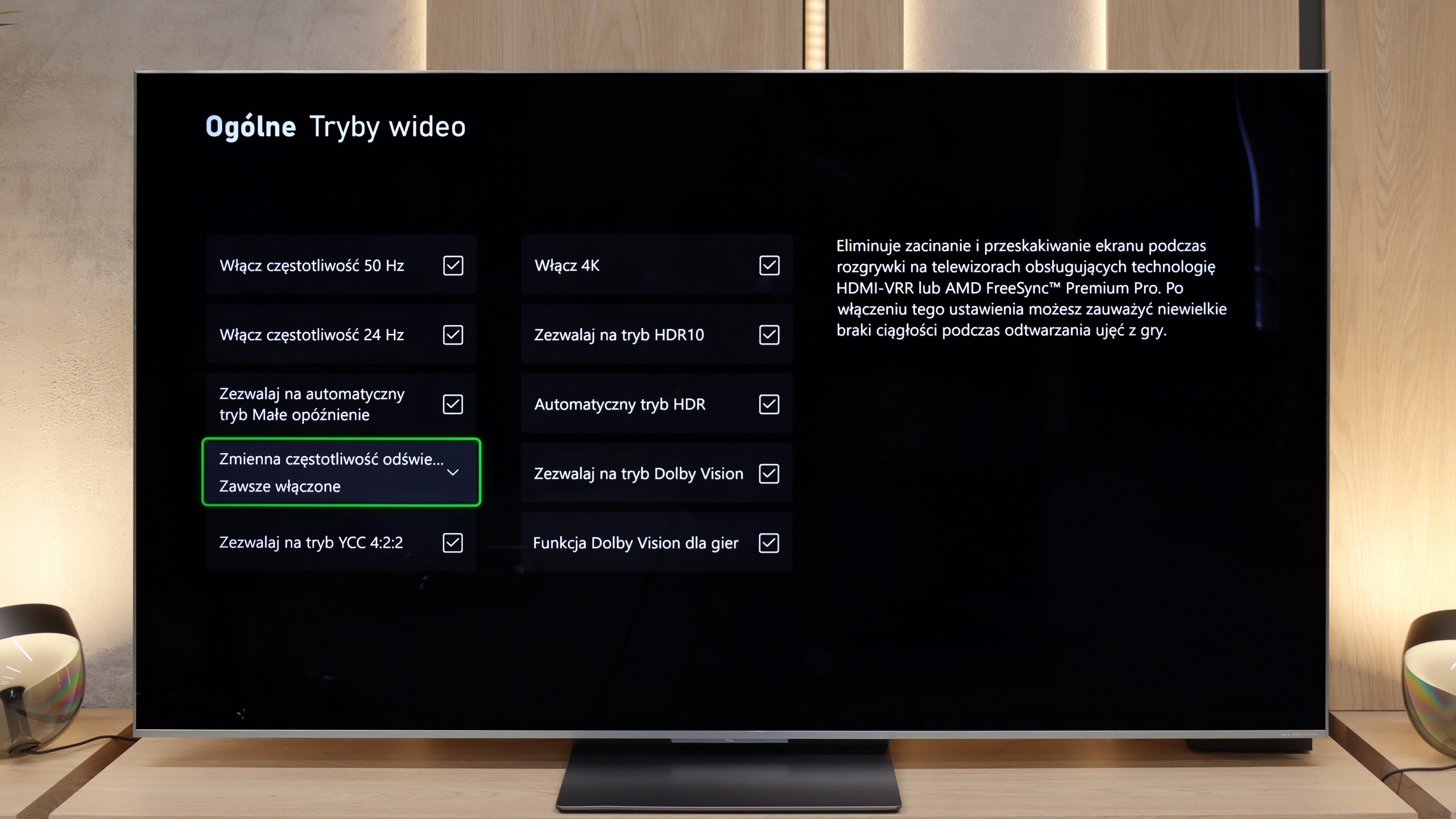

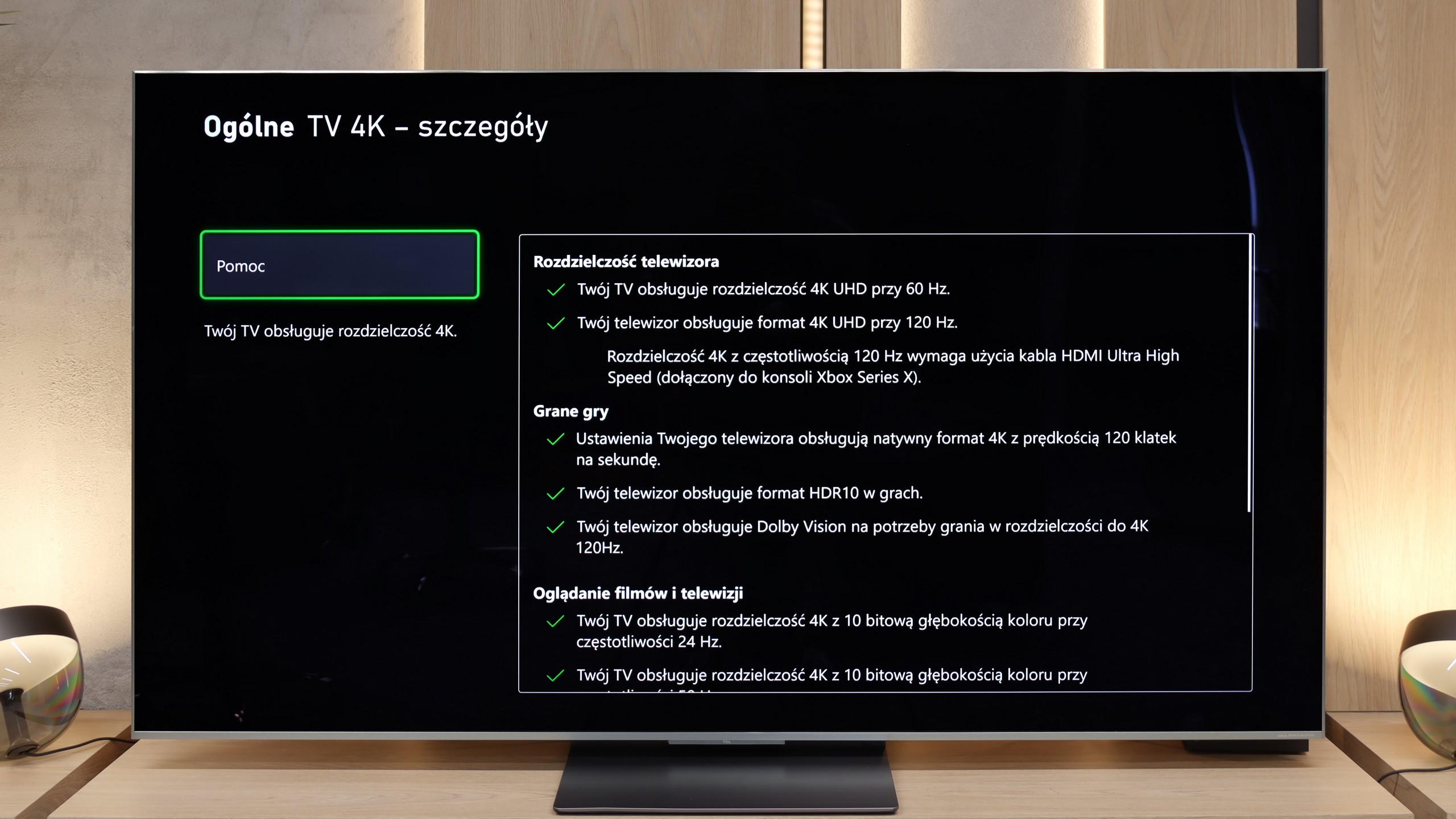

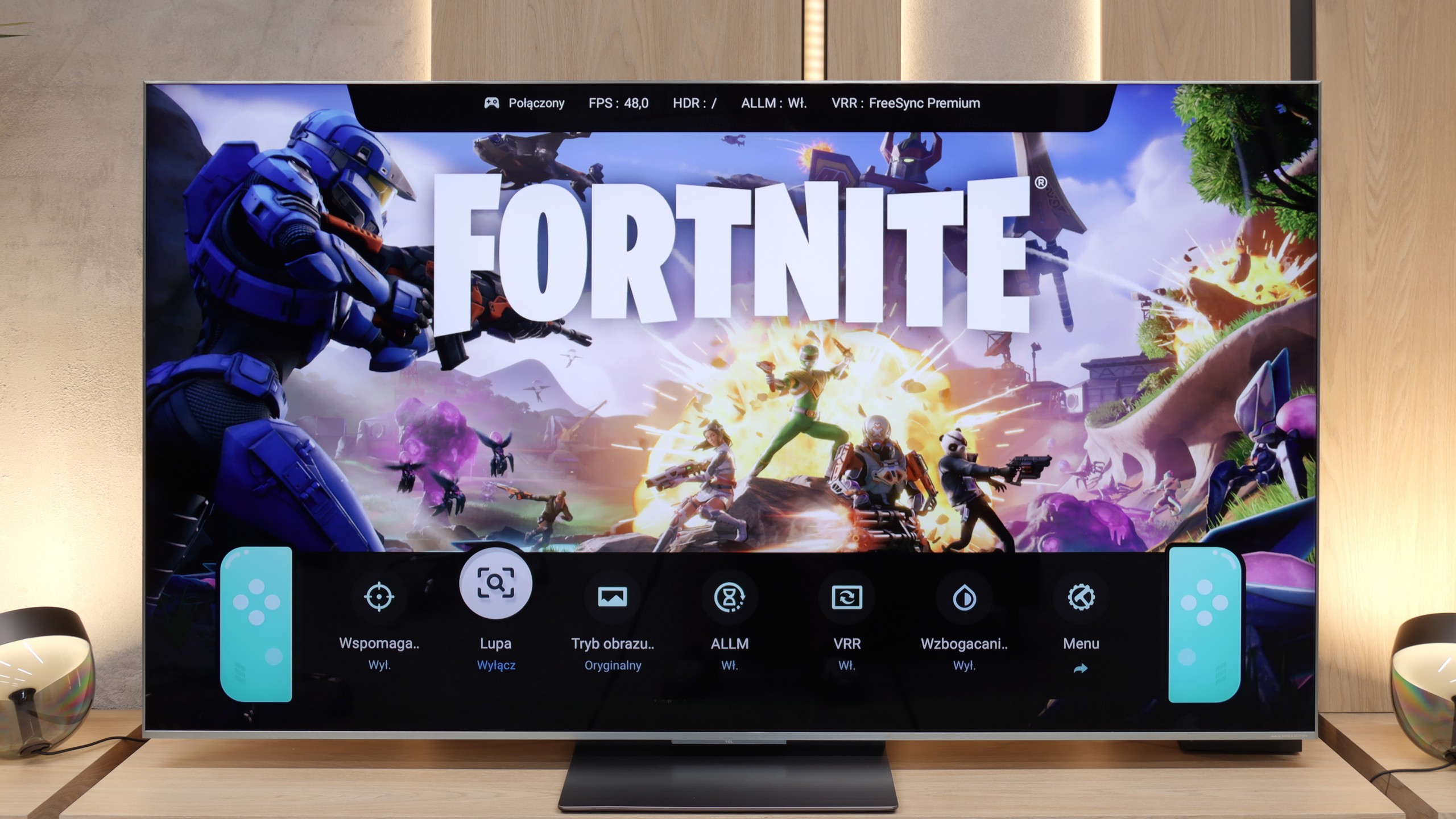

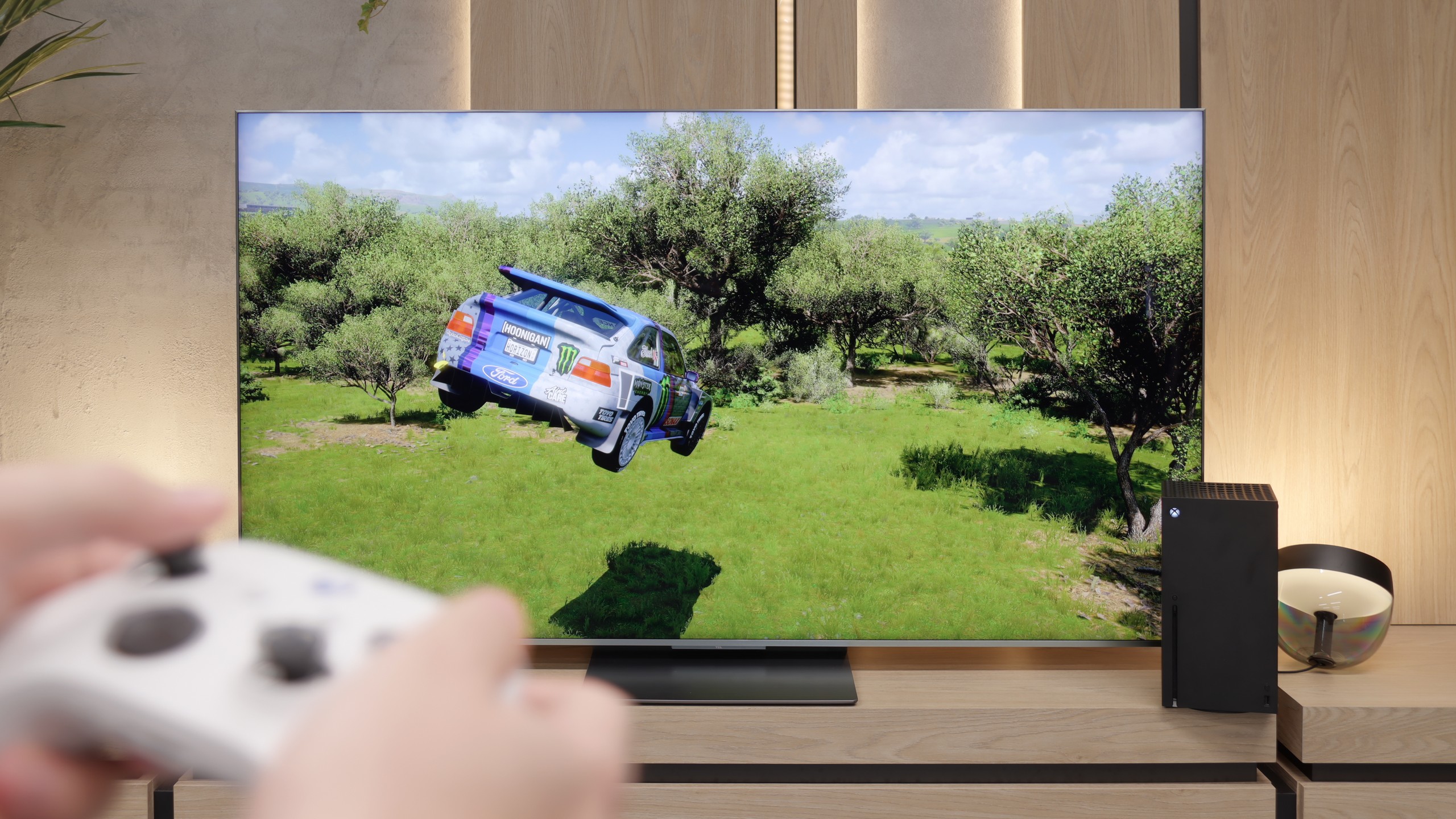
Television S90D is an excellent solution for gamers, offering a range of advanced features that elevate the gaming experience to a new level. Equipped with the HDMI 2.1 standard, the model supports modern technologies such as VRR (Variable Refresh Rate) and ALLM (Auto Low Latency Mode). Thanks to these solutions, the image is incredibly smooth, and the response to commands is instantaneous, which is crucial in dynamic titles. Additionally, the S90D supports HLG (Hybrid Log-Gamma) and G-Sync and FreeSync image synchronisation. This allows for a perfect connection with the Xbox, PlayStation, or PC, eliminating issues with tearing and stuttering. The built-in operating system offers the Xbox Game Pass app, providing access to a massive library of games directly from the television. This solution makes gaming even more convenient and accessible. The Game Bar feature provides quick access to important information, such as current settings, performance statistics, and the ability to adjust image options. This allows for on-the-fly modification of display parameters, which is incredibly useful during intense gameplay. Despite lacking support for Dolby Vision, Samsung S90D still delivers excellent HDR image quality, allowing for full utilisation of the potential of games and films. As a result, S90D represents a unique combination of modern technologies, excellent image quality, and intuitive features, perfect for any gaming enthusiast.
From a gaming perspective, the TCL C9K is a complete tool. It features two (out of four) full bandwidth 48 Gbps HDMI 2.1 ports, so all the key technologies work: VRR (Variable Refresh Rate) and ALLM (Auto Low Latency Mode). Additionally, the manufacturer has included a really intuitive Game Bar that allows you to quickly check the most important parameters and adjust settings without fumbling through menus. Also, TCL's policy is a plus – the TV isn’t afraid of any HDR formats, even in game mode. Whether it's HGiG or Dolby Vision for the Xbox Series S/X console – everything works as it should, giving the player plenty of freedom.
Input lag
10/10
9.8/10
SDR
HDR
Dolby Vision
QD-OLED from Samsung stands out with an incredibly low input lag, making it an excellent choice for gamers. Regardless of the resolution or refresh rate, both in SDR and HDR mode, results around 10 ms are truly impressive. Such a low input lag ensures immediate response to actions on the screen, which is crucial in dynamic games where every millisecond counts. Users can enjoy smoothness and precision, which makes the S90D TV with QD OLED panel a superb option for those who prioritise performance in gaming.
In terms of input lag, the TCL C9K performs exceptionally well. With 120 Hz content, the lag is only 7 ms, placing it among the very top televisions available on the market. Naturally, with 60 Hz materials, the input lag increases to around 15–16 ms, but in practice, this has little impact on the final responsiveness of the screen to our actions on the controller.
Compatibility with PC
8.6/10
8.6/10

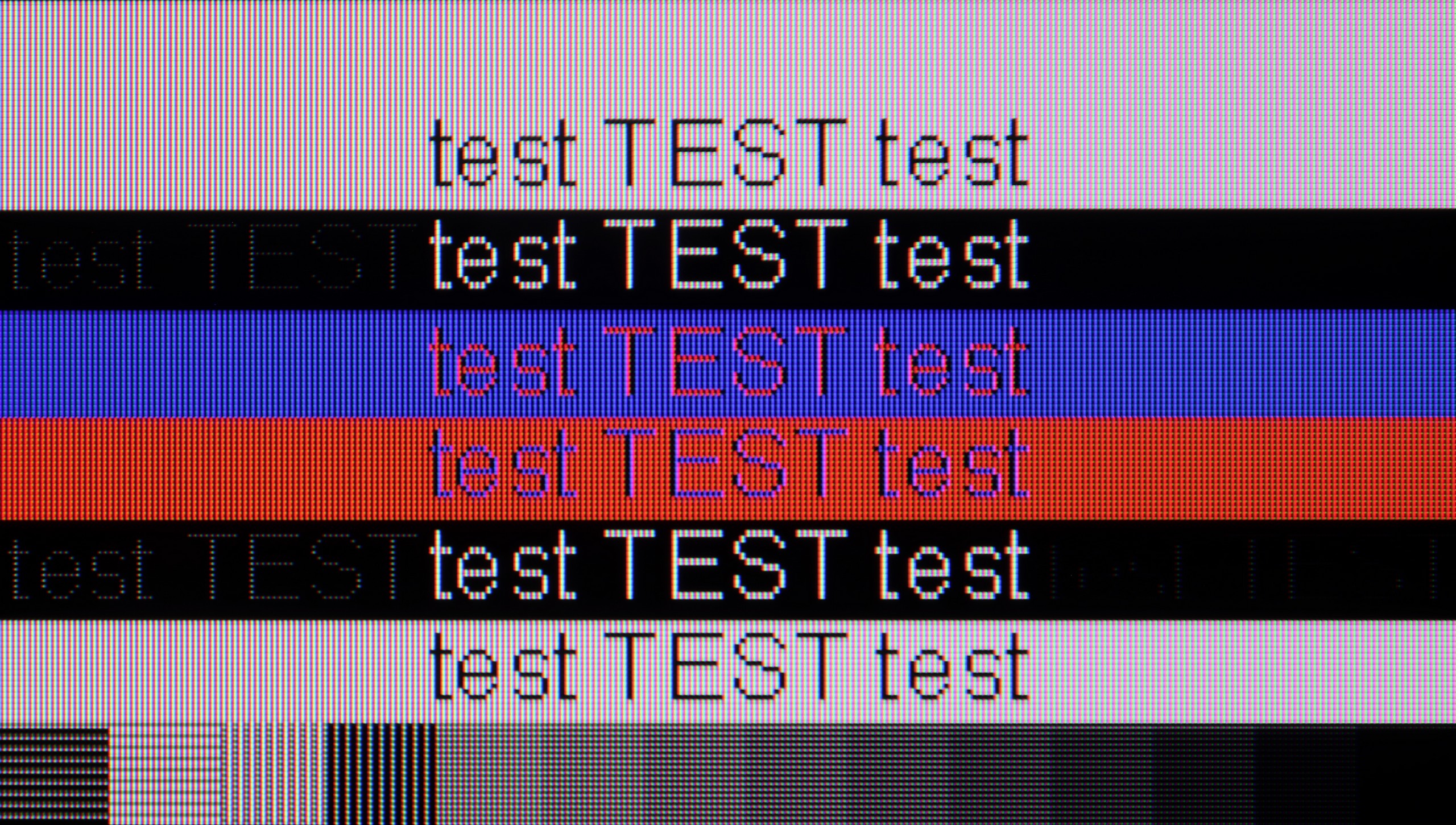
The Samsung S90D 65 TV performs excellently as a monitor for PCs. Fonts appear sharp, making it easier to read and use various applications. Support for chroma 4:4:4 at a resolution of 4K and a refresh rate of 144 Hz ensures full colour reproduction and outstanding image clarity. Moreover, the impressive input lag of just 5 ms is a significant advantage, especially for gamers and professionals working with graphics. However, it should be noted that points were deducted in this category compared to the WOLED panel version due to the different diamond arrangement of sub-pixels, which may lead to the distinct visibility of individual sub-pixels when displaying fonts on a dark background. This issue only pertains to the 65-inch version, so users who plan to use the TV on their desk will not encounter these difficulties with smaller variants.
When it comes to office work, the TCL C9K does not disappoint – thanks to support for chroma 4:4:4, text readability is at a good level, so typing or working with documents shouldn’t be a problem. While there are some minor issues with dimming horizontal lines, in everyday use it’s hard to call this a real flaw. However, the biggest potential of the C9K reveals itself in PC gaming. Here, the television showcases its full capabilities – it can switch to lower resolutions, such as Full HD, and display images at up to 288 Hz. Additionally, it supports both G-Sync and FreeSync, so synchronisation with the graphics card works excellently. It’s hard to have any significant complaints about this setup – it’s truly a top-tier screen for gaming on a computer.
Viewing angles
9.8/10
4.5/10
In the category of viewing angles, the S90D Samsung stands out as one of the best models on the market. While traditional OLED TVs already offer solid performance, the use of a QD-OLED panel in the S90D elevates the picture quality to an even higher level. Thanks to the combination of Quantum Dot technology with self-emissive pixels, users can enjoy excellent color accuracy and detail, even when watching the TV from a wide angle.
A new feature in TCL televisions for 2025 is the WHVA panel, which is designed to provide better viewing angles than standard VA panels. And indeed – progress is noticeable. When viewing the screen from the side, the image is clearer and the colours do not degrade as quickly as in previous models. However, this does not mean that we are encountering the level of top coatings or solutions found in IPS panels, and certainly not OLEDs. The image remains readable, but the brightness noticeably drops. This is definitely a step forward compared to earlier TCL models, but not a full revolution yet.
TV efficiency during daytime
5.3/10
7/10

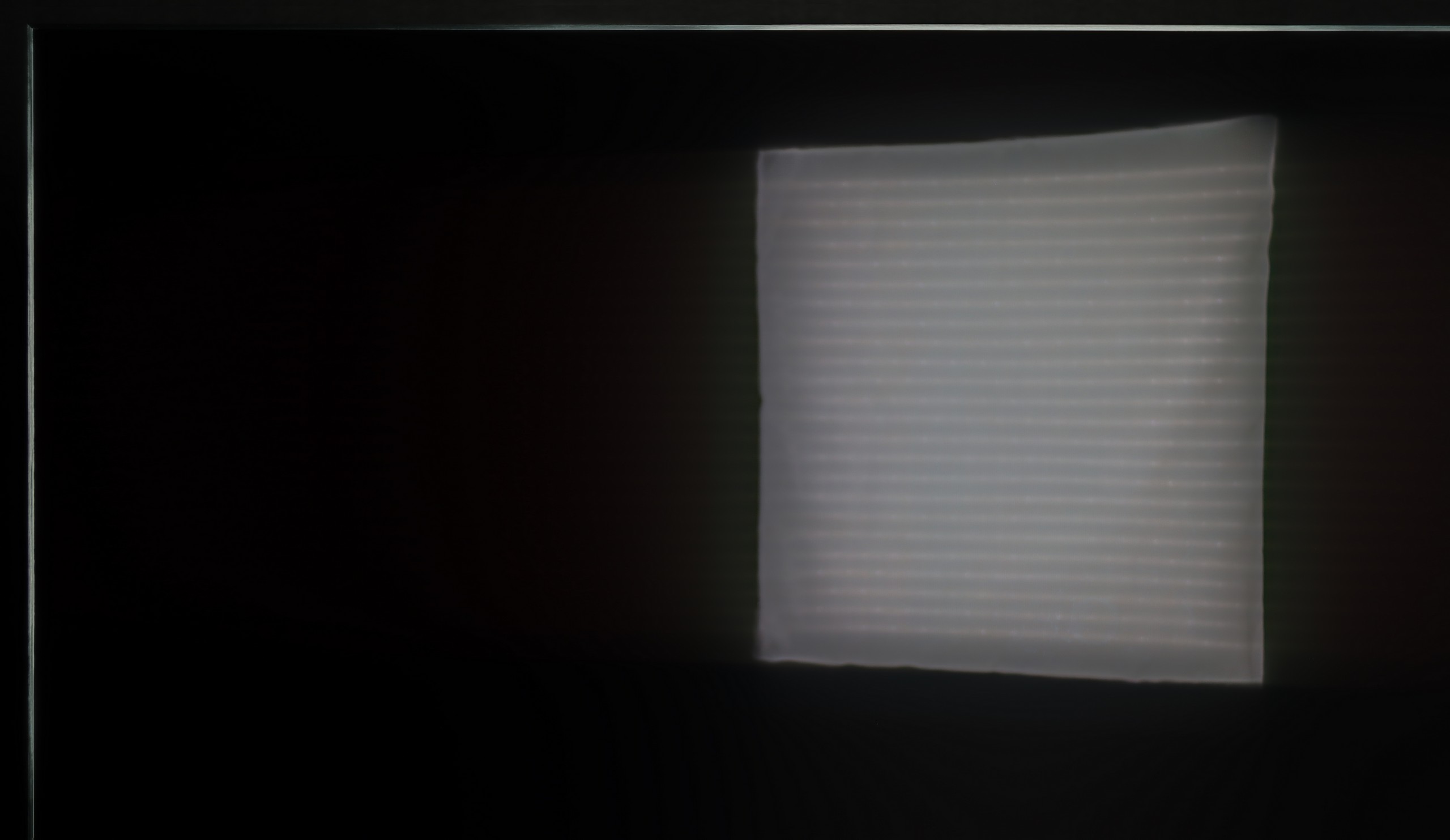

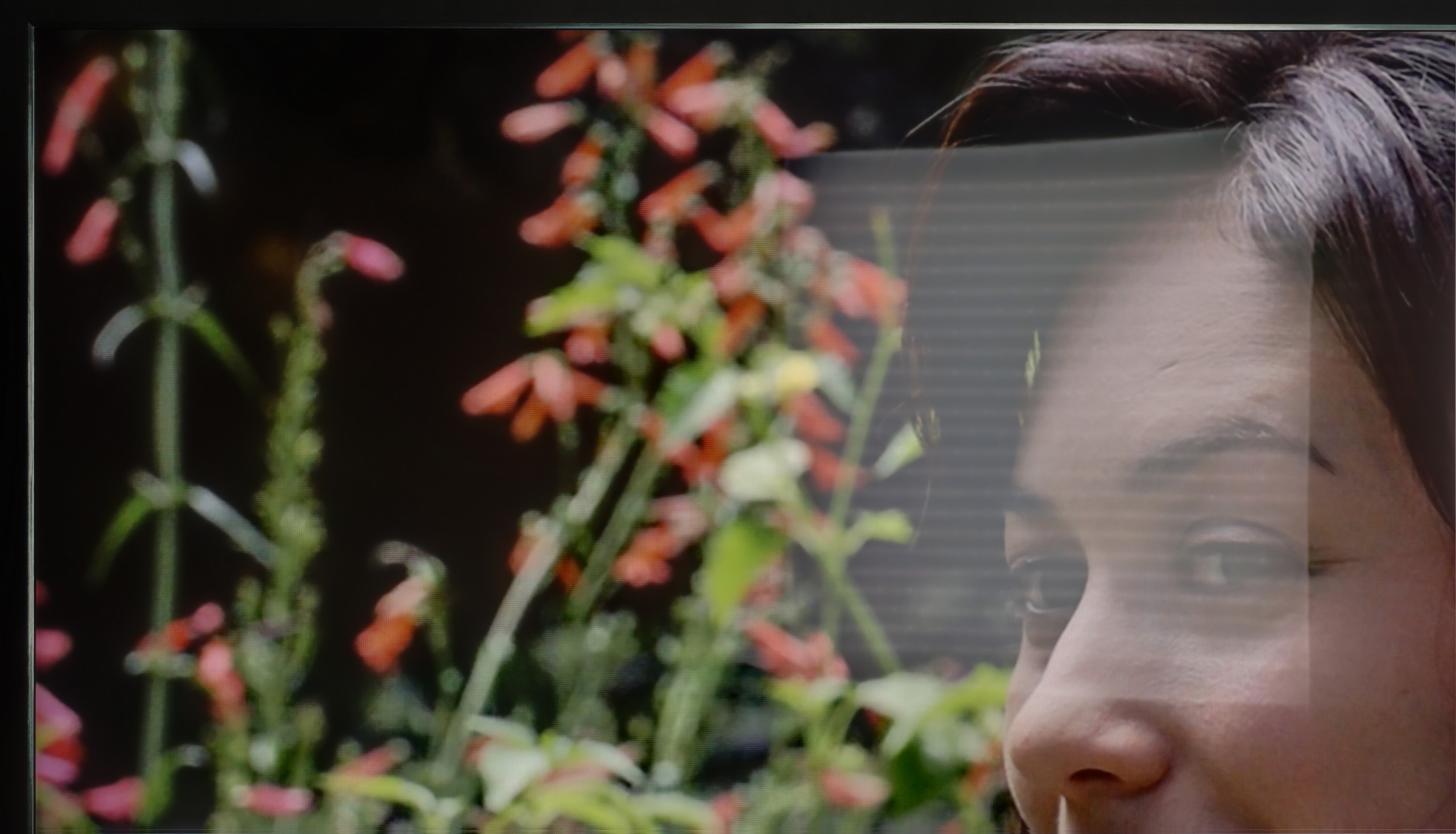
Matrix brightness
Average luminance SDR
TCL C9K: 642 cd/m2
Samsung QD-OLED S90D / S94D: 339 cd/m2
In the category of TV performance during the day, the model Samsung S90D 65 ranks the worst among the tested options. Although the glossy panel and good anti-reflective properties suggest some efficiency in bright conditions, the quality of blacks during sunny days proves to be the biggest issue. This phenomenon is caused by the close placement of quantum dots to the outer layer of the screen. Under the influence of external light rays, these dots can activate, resulting in the blacks on the screen becoming more cherry-like. This effect causes the image to lose depth and intensity, which can be particularly noticeable in darker scenes. As a result, users who plan to use the TV in bright rooms or under strong sunlight may encounter difficulties in achieving satisfactory image quality. However, when it comes to watching movies with a lot of black, this usually takes place in the evenings when the issue of intense sunlight is no longer as significant. In such conditions, the S90D performs significantly better, and users can enjoy a pleasant visual experience. During the day, while watching regular TV, the television also performs adequately, which means it is not a complete disqualifier for this model.
The new WHVA matrix coating has its strengths and weaknesses. On one hand, it handles smaller reflections quite well, but on the other hand, with stronger light sources, it shows that the suppression of reflections isn't at the highest level. Fortunately, the coating doesn't ruin what's most important: the blacks and colour saturation. This is definitely a plus, as in many competing models, compromises in this area are much more painful. Additionally, it has very high brightness – in SDR content, the C9K can achieve an average of 650 nits in SDR materials. This performance is more than sufficient for watching TV or films in challenging lighting conditions, even on a sunny day.
Details about the matrix
Subpixel Structure:

Panel uniformity and thermal imaging:

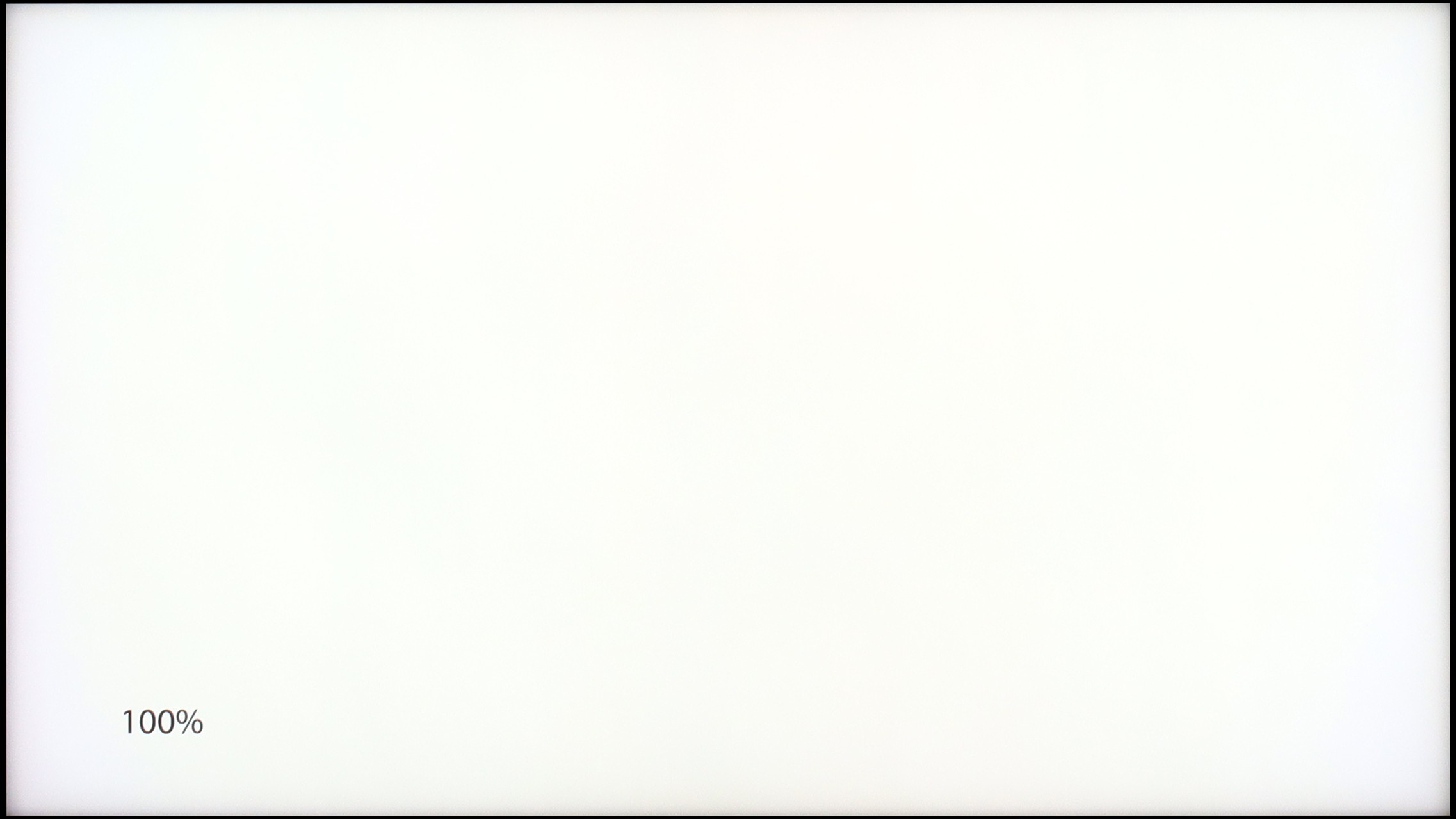
Samsung QD-OLED S90D / S94D
TCL C9K
TV features
7.4/10
7.7/10
- HDMI inputs0 x HDMI 2.0, 4 x HDMI 2.1 48Gbps2 x HDMI 2.0, 2 x HDMI 2.1 48Gbps
- OutputsToslink (Optical audio), eARC (HDMI), ARC (HDMI)Toslink (Optical audio), eARC (HDMI), ARC (HDMI)
- Network InterfacesWi-Fi 2.4GHz, Wi-Fi 5GHz, Ethernet (LAN) 100MbpsWi-Fi 2.4GHz, Wi-Fi 5GHz, Ethernet (LAN) 100Mbps
- TV receptionDVB-T, DVB-T2, DVB-S, DVB-S2, DVB-CDVB-T, DVB-T2, DVB-S, DVB-S2, DVB-C
Classic features:
- Recording to USB (terrestrial TV)
- Recording programming
- Picture in Picture (PiP)
- RF remote control (no need to aim at the screen)
- Backlit remote control
- Teletext
- Audio only mode
- Possibility to connect Bluetooth headphones to the TV
- Possibility to simultaneously use Bluetooth headphones and the TV speaker
Smart features:
- AirPlay
- Screen mirroring (Windows Miracast)
- Wyszukiwanie głosowe
- Voice search in native language
- Ability to connect a keyboard and mouse


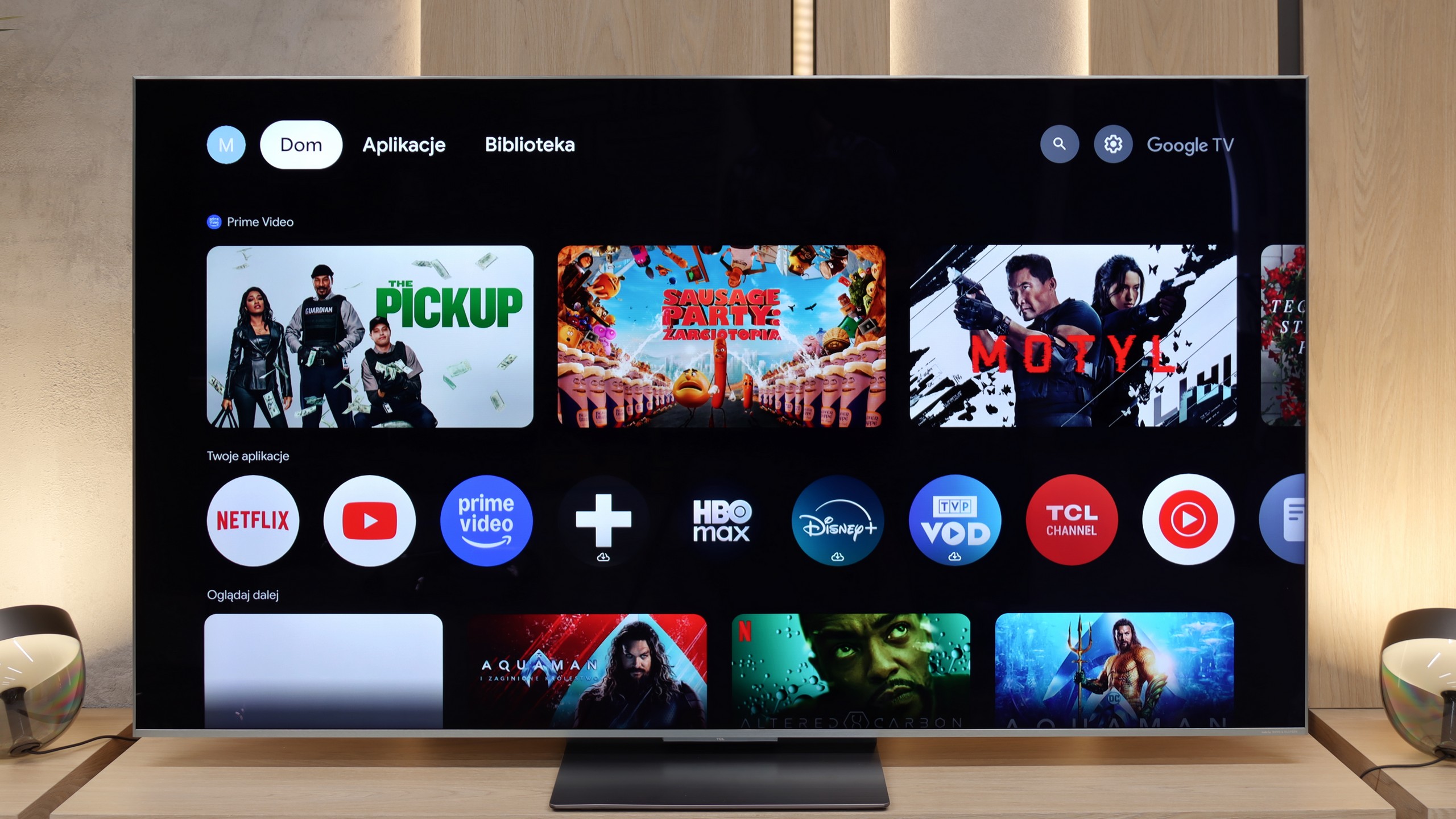
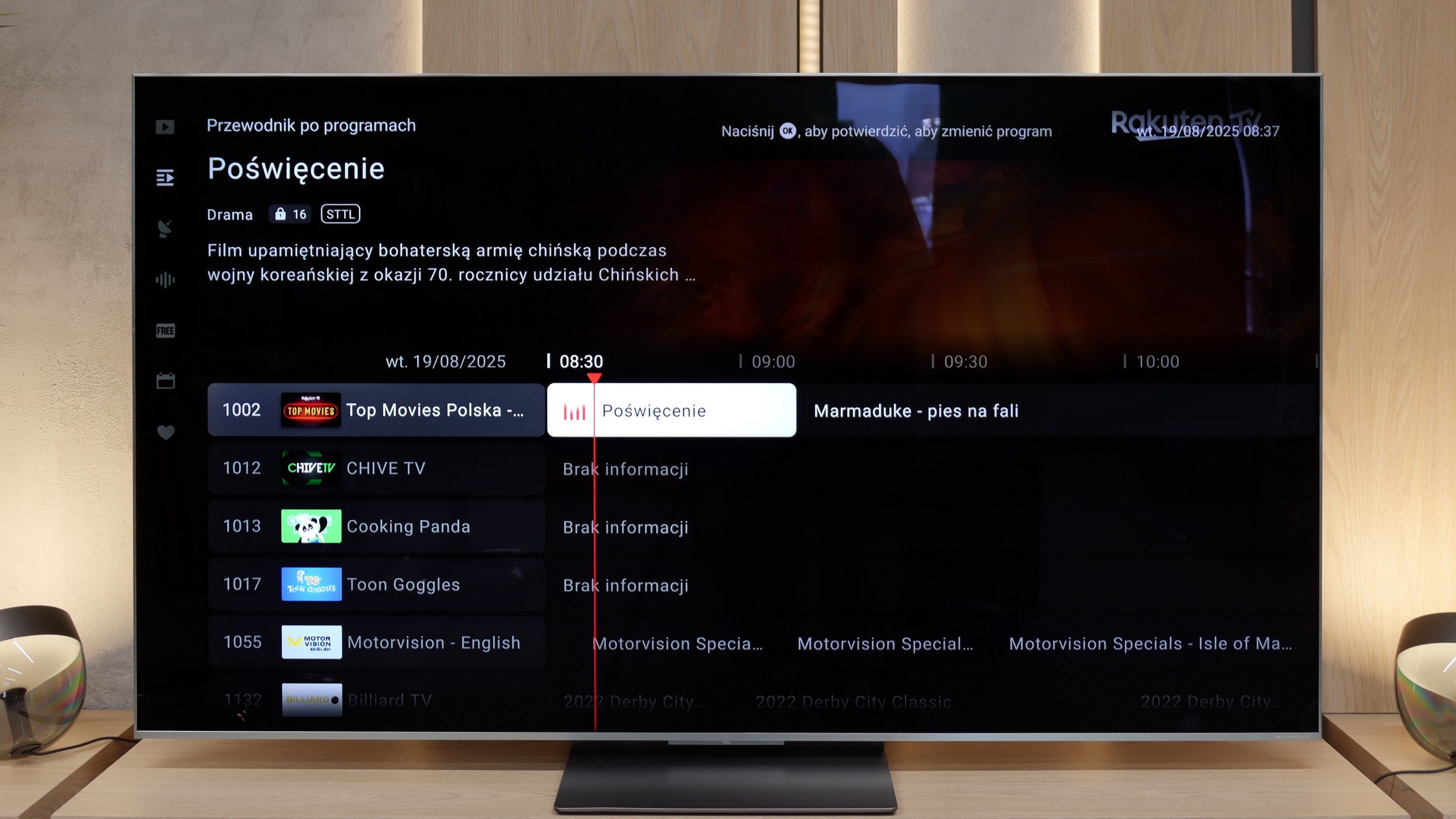
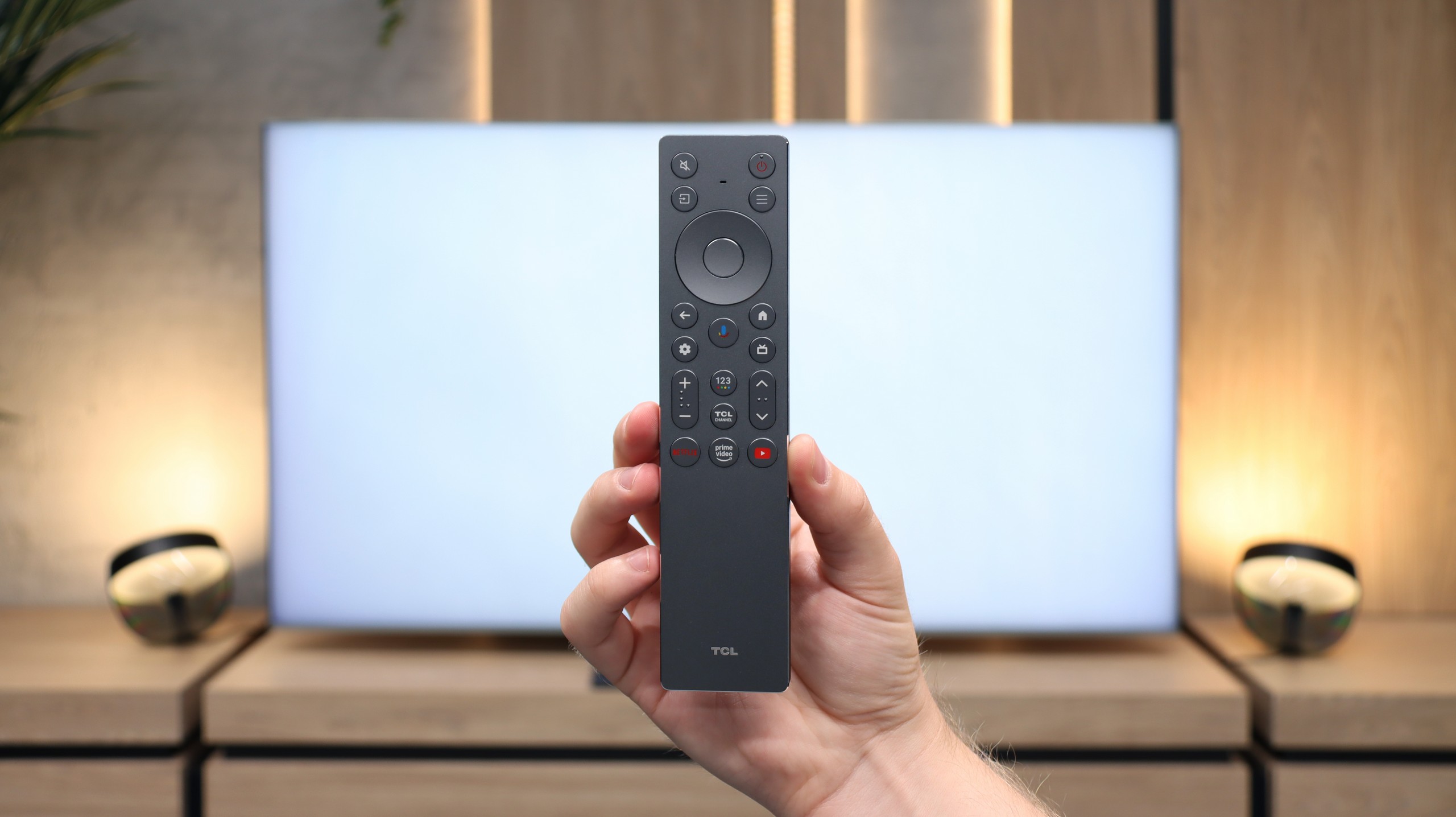
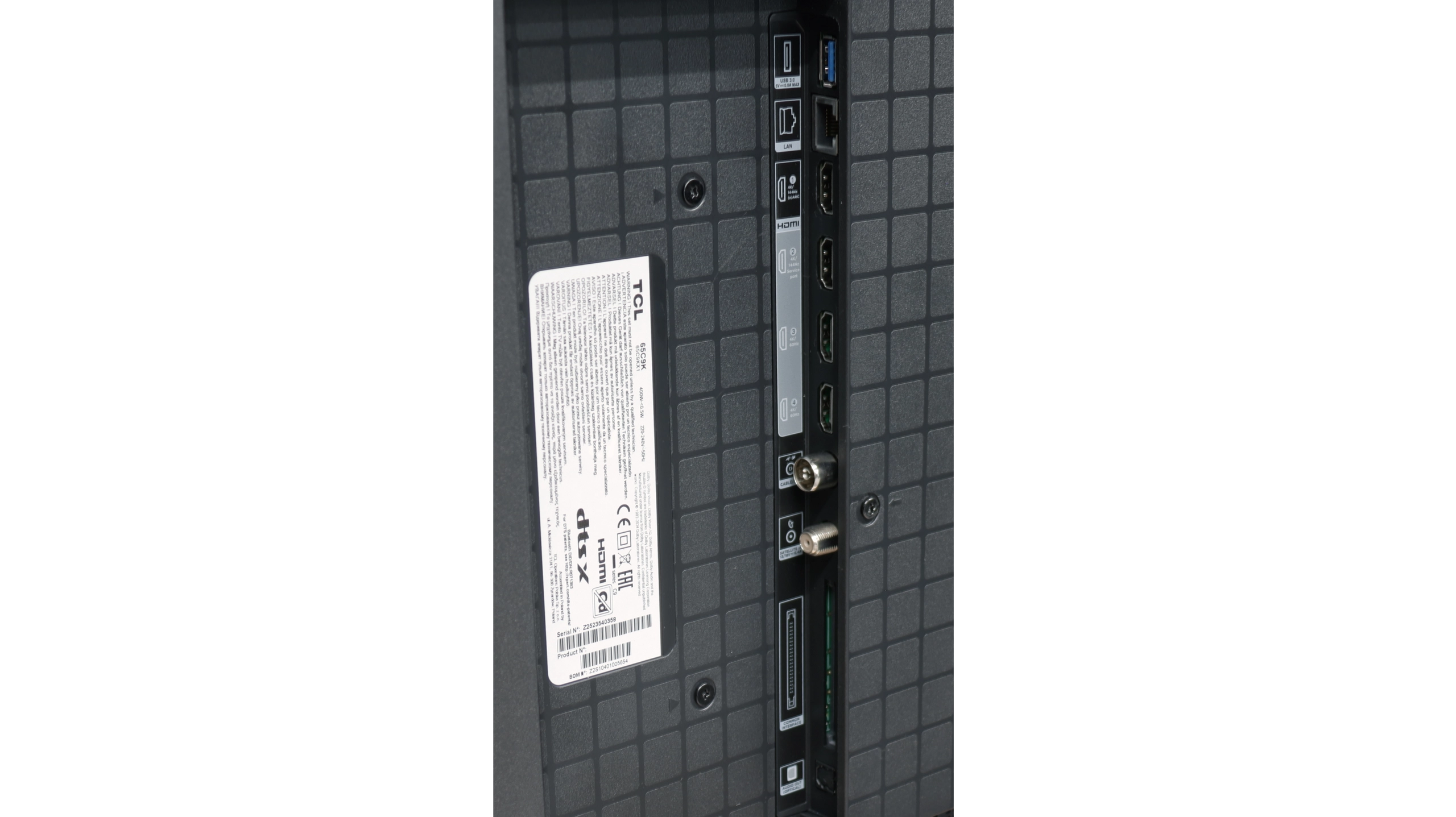
The Samsung S90D television offers a range of features that significantly enhance user comfort, making it an ideal device for entertainment in the comfort of your home. The Tizen system, on which this model is based, is a modern and advanced platform that provides users with an intuitive and seamless experience. Thanks to the user-friendly interface, navigating through applications and settings is quick and intuitive, making it easy to use the television even for those less familiar with technology. Tizen supports a rich set of applications, including all popular streaming services such as Netflix, YouTube, and Amazon Prime Video. A new feature for 2024 is the availability of voice search in Polish. It is also worth noting the eco-friendly solar remote, which is not only environmentally friendly but also practical for everyday use. With it, you can control multiple devices connected to the television, eliminating the need for multiple remotes. Additionally, the television supports AirPlay, enabling easy content sharing from Apple devices such as iPhone or iPad. The S90D also allows for the connection of various Bluetooth devices like mice, keyboards, or headphones, which increases its versatility and allows for user experience personalisation. Furthermore, the SmartThings app significantly enhances the capabilities of the television, allowing integration with other smart home devices. This enables remote management of lighting, security, and other aspects of the home ecosystem. Users can also take advantage of the Philips Hue app, which allows for lighting synchronisation with the image displayed on the screen, creating even more immersive visual experiences. The only downside that can be pointed out is the lack of USB recording support. For some users, this may be a limitation. Despite this, the S90D television offers many advanced features and technologies that make it an excellent choice for anyone seeking high-quality entertainment in their home and wanting to integrate their devices into one convenient system.
Classic TV Features
In terms of basic TV functions, the TCL C9K does not disappoint – it has everything that most users expect. The EPG guide operates smoothly, teletext is available, and pairing Bluetooth headphones, a mouse or a keyboard goes off without a hitch. However, it should be noted that in the Google TV system – just like in other TCL models – there is a lack of more advanced options such as programme recording or picture-in-picture (PiP) mode. Some people may find this unsatisfactory, especially if they have used such features with competitors. It's also worth mentioning that we only have one USB port – it's enough to connect a hard drive with movies or a USB stick, but if someone plans to use multiple storage devices, they may find this lacking.
Smart Features
While in terms of classic solutions the TCL C9K does not stand out, in the field of smart functions it showcases its full potential. The Google TV system is currently the most popular platform and it’s clear why – the app library is enormous. Netflix, YouTube, Disney+, HBO Max, Amazon Prime Video – all are readily available. Only those very attached to more closed ecosystems, like Apple Music, will feel the absence. A significant advantage is the built-in voice assistant – it works quickly, understands natural commands, and allows for convenient control of the TV: from switching channels to opening apps, as well as searching for content or checking the weather. It’s in this area that the TCL C9K shows that a smart TV is more than just a “TV with internet” – it’s a tool that genuinely simplifies everyday use of the device.
Playing files from USB
9.1/10
9.2/10
Supported photo formats:
Maximum photo resolution:

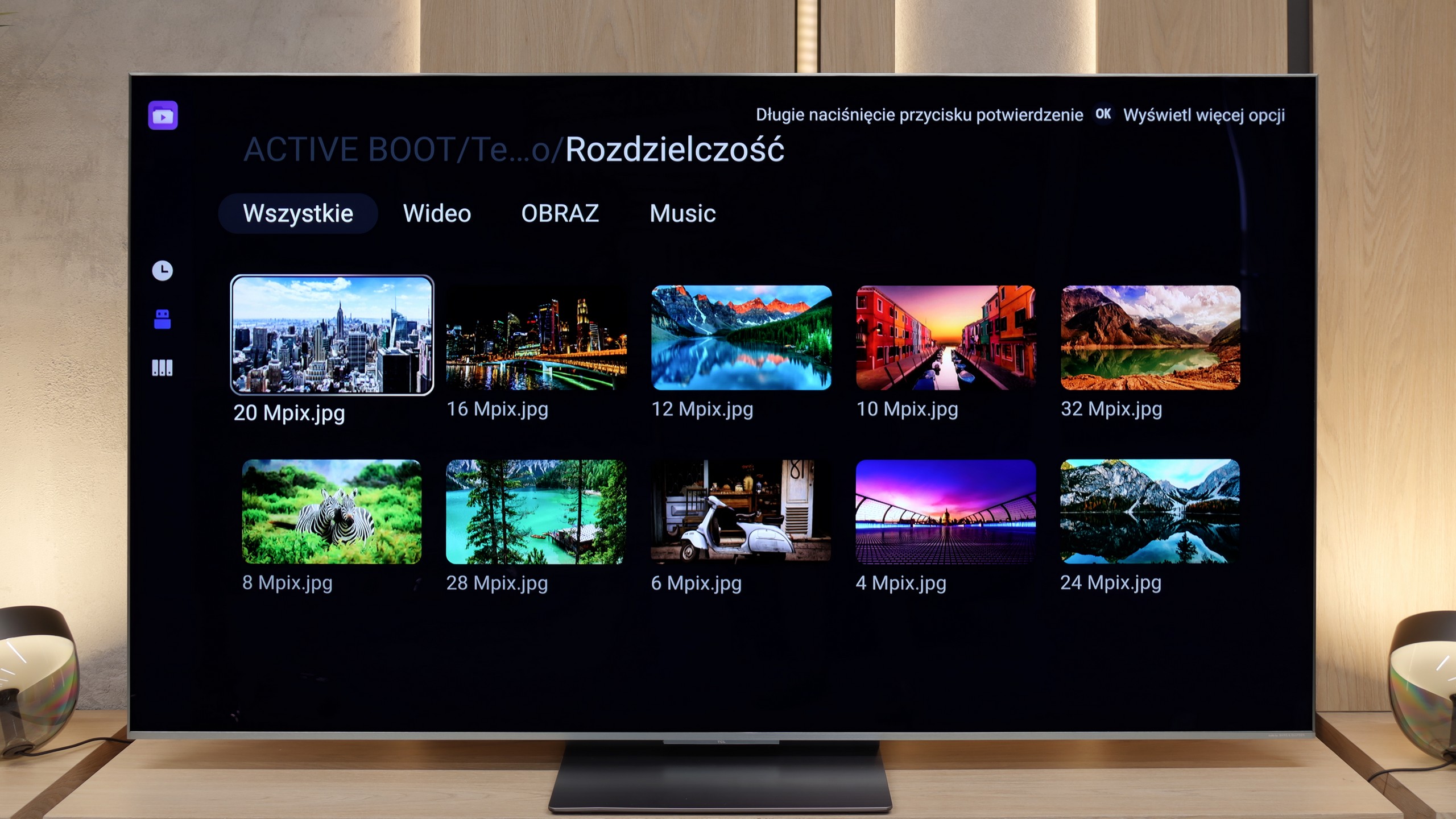
Samsung S90D is fitted with a built-in player that supports most popular video formats, allowing for convenient playback of films from various sources. The player also supports subtitles in Polish and allows users to customise the font colour, enhancing comfort when watching content with subtitles. In terms of photo formats, the television handles many, but one of the few downsides is the inability to play the popular PNG format. Nevertheless, the overall playback capabilities of the S90D are at an excellent level.
The C9K had no trouble handling most of the materials we threw onto the USB drive – from MKV formatted films, through older AVI files, to audio tracks in DTS and FLAC. The only issue remains the lack of support for HEIC photos from Apple devices, but this is a problem for practically all manufacturers. However, the most important thing is that if someone is missing support for some exotic format, they can always reach for an alternative player available in the Google Play store. And this is where the advantage of the Google TV system shines through – the ease with which you can expand the television’s capabilities with additional applications.
Apps
8.7/10
9.6/10














































Sound
7.4/10
7.9/10
- Maximum volume-77dB
- Dolby Digital Plus 7.1
- Dolby True HD 7.1
- Dolby Atmos in Dolby Digital Plus (JOC)
- Dolby Atmos in Dolby True HD
- DTS:X in DTS-HD MA
- DTS-HD Master Audio
The Samsung S90D TV is equipped with a 2.1 audio system boasting a total power of 40 W, delivering clear and dynamic sound. With a subwoofer located at the bottom of the casing, the bass is deep and palpable, while the mid and high tones remain well-balanced. It's worth noting that the twin model S94D offers an even more advanced 2.1.2 speaker setup with a power of 60 W. If the silver colour of the S94D casing is not a drawback, and the price difference between these models is minimal, it’s worth considering the version with the “4” at the end. Despite lacking support for the DTS format, the S90D TV utilises other advanced sound technologies such as Dolby Atmos and Dolby Digital Plus, providing spacious and immersive sound. It is also worth mentioning the presence of the proprietary Q-Symphony feature, which allows synchronisation of the TV's speakers with the manufacturer's soundbar.
The sound in the TCL C9K is handled by the same setup as in the C8K model – prepared in collaboration with Bang & Olufsen. It features a 4.2.2 configuration with a total power of 90 W, consisting of eight speakers arranged to create a fuller sense of space. And I must admit – the effect is impressive. The dialogues are clear, the highs and mids sound pure, and the bass does not falter, even during louder screenings. Of course, this won't replace a dedicated soundbar or home theatre system, but for built-in speakers – there’s really something to listen to.
*During maximum volume tests, we noticed unusual behaviour from the audio system. With the slider set to 100%, the television reaches around 76–78 dB, but it’s clear that it tries to generate more power, after which the sound level is immediately corrected back to the mentioned value. On the other hand, when we lower the volume to, say, 70%, it initially decreases as expected, but after a moment, it slowly rises back up to that same level of 76 dB. This effect gives the impression of an aggressive limiter at work, which regardless of the slider position always brings the volume back to a single level. We checked this behaviour multiple times, and in each case, the result was the same – no additional functions for 'intelligent' volume adjustment or AI were active during these tests.
Acoustic Measurements
No acoustic data
77dBC (Max)
75dBC


